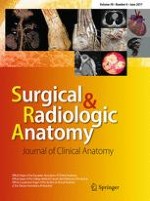22.10.2016 | Anatomic Variations
Anastomosis between accessory middle cerebral artery and middle cerebral artery diagnosed by magnetic resonance angiography
Erschienen in: Surgical and Radiologic Anatomy | Ausgabe 6/2017
Einloggen, um Zugang zu erhalten










